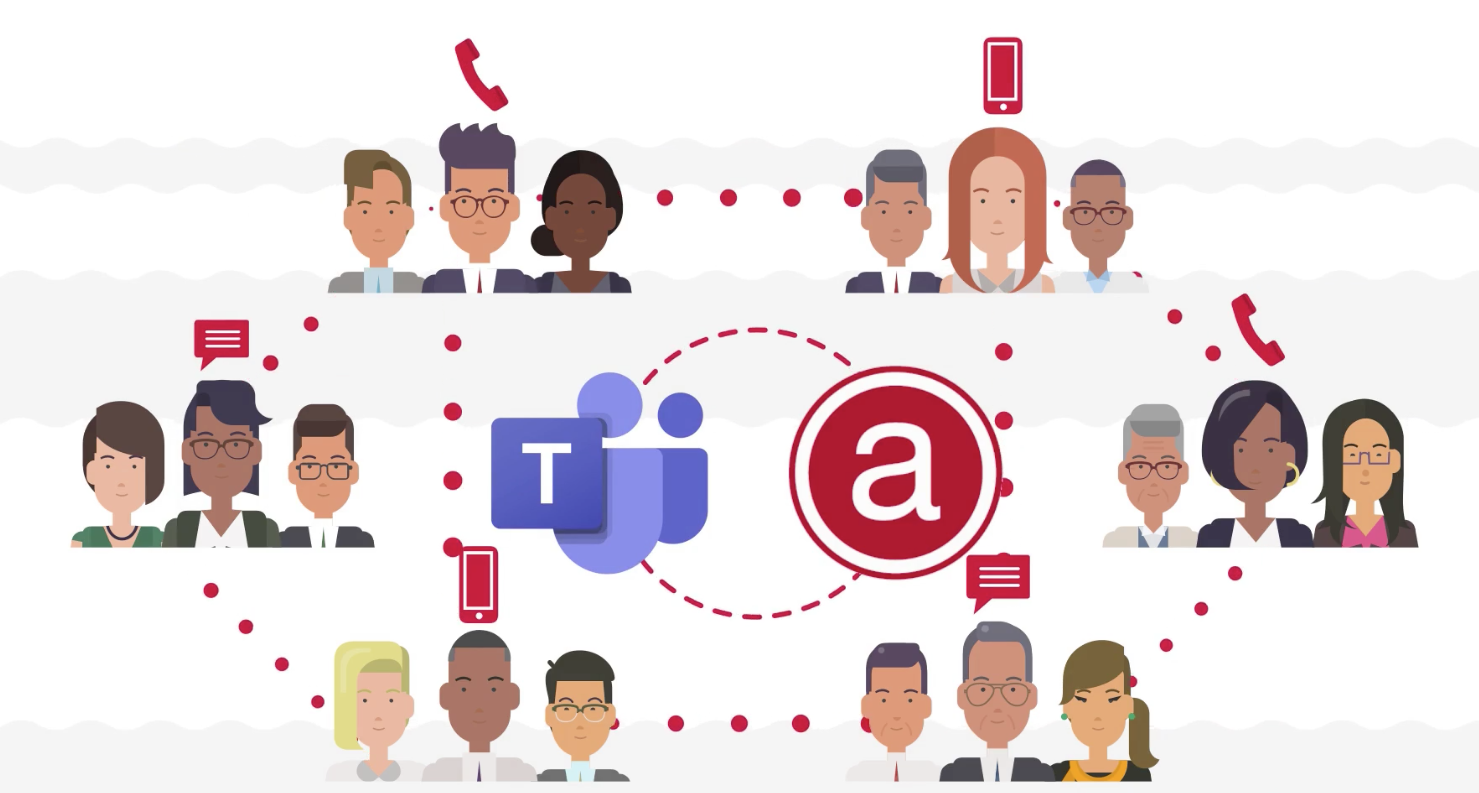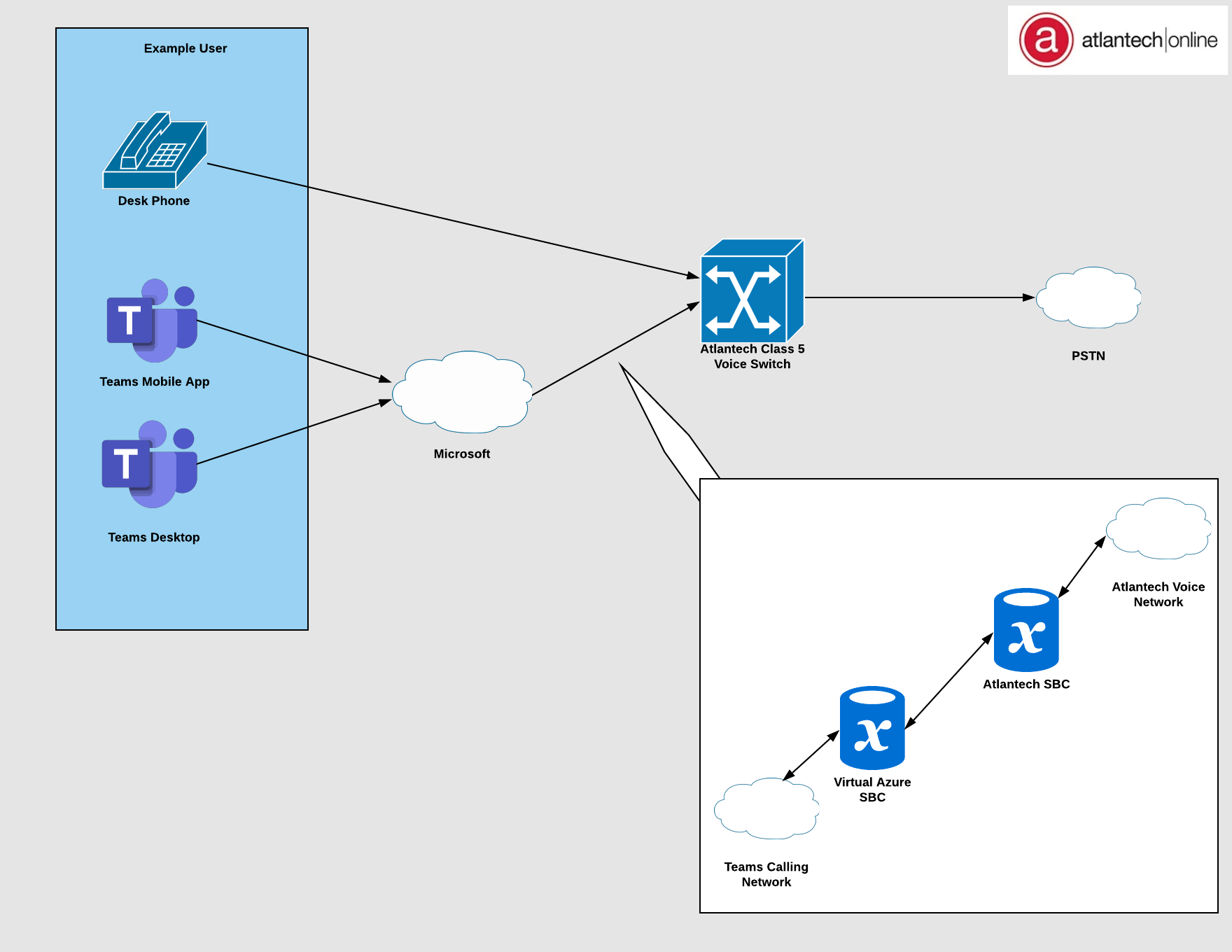Enterprise Telephony Using Microsoft Teams

Enterprise Telephony: Are you set up for success?
Teams is Microsoft’s fastest-growing business application of all time. It should come as no surprise as, since November 2019, the number of daily Microsoft Teams users grew from just 20 million to a staggering 75 million. Of course, the COVID 19 pandemic and the acceleration of work from home have dramatically driven adoption.
It’s hard to ignore that nearly 260 million people around the world use Office 365 and now that Teams is included for FREE that this bundling will allow businesses to easily adopt Teams and implement it into their workflows.
What makes Teams so attractive is that tools like team messaging and video conferencing are readily available, but Teams requires a separate solution to enable workers to make calls on the platform.
This presents some critical issues as though several collaboration essentials are included, telephony isn’t one of them. Telephone calling is still one of the most popular business communication tools and lacking this standard feature in Teams leaves enterprises without a key asset.
Extra licenses and solutions are required to add telephony to Teams. Each user needs a Microsoft Phone System license, which is available as an add-on license or is bundled into certain M365 packages. Secondly, each user needs connectivity to the PSTN which provides lines and minutes.
Microsoft Calling Plans
Microsoft can be used directly as a telephony carrier, like Verizon or Atlantech Online is a phone carrier. Microsoft provides a user with a calling plan that includes a phone number and a bundle of calling minutes. Calling plans are a simple route to add telephony functions in MS Teams, with MS providing the entire service end to end. Microsoft Calling Plans do have a number of restrictions and a limited PBX functionality and feature capability. This distinguishes their service from Atlantech Online or Verizon.
Direct Routing
Organizations can connect Teams to a third-party telephony carrier, providing users with a phone number and minutes. The connection is enabled by using a Microsoft-certified SBC. Direct Routing allows enterprises to bring their existing carrier relationships and services into Teams, this means being able to take advantage of cheaper call rates, greater flexibility, and better support compared to working directly with MS. A Direct Routing setup can be costly with SBC management costs and Direct Routing services may add additional OPEX costs on top of MS licensing.

The most popular method of enabling telephony in Teams is Direct Routing as evidenced by more than 80% of MS Teams users have direct routing through third-party telephony partners, such as Atlantech Online, rather than Microsoft’s own calling plans. A number of key factors contribute to the popularity of Direct Routing, including global availability, cost, integration, and feature capabilities.
Challenges of the Microsoft communication stack
Many enterprise organizations need telephony integrated natively into their MS Teams environments. The integration allows users to access PBX features such as call control and management, without having to move into other applications or systems. This results in reducing downtime and application overload and also simplifying training and management. Here are some key features and functions that are included within the Microsoft Teams communications stack.
Microsoft Phone System
Phone System is Microsoft’s add-on license which enables call control and PBX functionality in MS Teams. Users in with MS Teams with Phone System license can then natively use the Teams application to place, receive and transfer calls.
Calls between users in the same organization or tenancy, regardless of geographic location are handled internally by Phone System and never go out to the PSTN. But, if a Teams user needs to make external calls, Phone System must be connected to the PSTN, either via Microsoft Calling Plan or by integration with Direct Routing. By integrating with Direct Routing, a carrier such as Atlantech Online can be used.
Microsoft Phone System offers a set of basic features and functions that you’d expect to be included within any business PBX system. Features include:
- Call Transfer/Hold
- Call Pickup Groups
- Call blocking and retrieve
- Cloud voicemail
- Auto Attendant
- Internal Caller ID
What is not available is native call recording, call reporting, external caller ID and advanced calling vectors.
While I am certain that Microsoft is continuing to improve and further develop the Phone System feature set, I am finding that the existing feature list does not meet the requirements of my customers and prospect that have more complex telephony requirements.
Another key consideration is that some of Microsoft Phone System’s features are delivered in the context of Microsoft Teams and Microsoft 365. While your M365 admins may be used to this interface, the features may be unfamiliar to voice system engineers. The M365 set works in very different ways to traditional PBX systems and users may require additional training and support to effectively use everything in a Teams environment.
Microsoft Calling Plans for Enterprise Requirements
Calling Plans allow organizations to utilize Microsoft as their PSTN carrier and offer a bundle of domestic or long-distance minutes and phone numbers for Teams users. The entire service provided directly with no additional PSTN carrier contract required. Calling Plans is also limited in terms of regional numbering, restricting enterprises in their selection of phone numbers. Let me remind everyone that Microsoft does not have a long track record with telecom and has only recently added this capability through acquisitions of Metaswitch and Affirmed Networks. They purchased the companies so they would get the required expertise to expand and integrate external capabilities to managed customer requirements that fall outside of its traditional business units. For example, number porting, provisioning and management are relatively new additions to MS’s support offering. Of course, these are all things that Atlantech Online are experts in.
Cost and value are also key considerations. Businesses familiar with per-user pricing are likely to find Microsoft Calling Plan bundles less competitive in terms of pricing than those generally available from other carriers. For small businesses or small office/home office users, Calling Plans may be suitable. But, once you get over 10 users, the cost become less viable. As an example, Microsoft Calling Plan includes 1200 Domestic Minutes and comes in at $12 per user per month. Don’t forget, you have to have Phone System and then Conference Calling, on top of that. Comes out to about $25/month. With Atlantech Online , you can use Teams as your softphone and get unlimited local and domestic long distance calling for $20 per user per month or less, depending on several other factors.
It should come as no surprise that we here at Atlantech Online think that Direct Routing is a superior alternative to Microsoft Calling Plans. That is, Direct Routing through a third party, not directly with Microsoft. It allows an organization to connect external phone lines and third party PBX systems with Microsoft Teams. Whereas, Microsoft requires organizations implementing Direct Routing to use one of a selection of SBC devices to connect to Teams and manage the connection of SIP trunks to the outside world.
Enterprise organizations exploring this approach would have a number of considerations to ensure viability. Firstly, the technical and financial capability to manage such a deployment like this could be considerable. In addition, enterprises would also require PowerShell knowledge. PowerShell is Microsoft’s task automation and configuration management framework that allows technicians to control and configure MS teams by automating processes and functions.
For many reasons, most enterprises will not want to configure and maintain their own SBCs and will not have the in-house technical capability, in PowerShell or otherwise, to manage this form of network configuration. In this case, they’ll need to explore working with a third party and enable telephony in Microsoft Teams.
Using Atlantech Online enables organizations to overcome Microsoft Phone System shortcomings and overlay additional advanced PBX functionality which includes improved integration capabilities, enhanced support provisioning and more detailed analytics and reporting.

You get the native inclusion of advanced PBX features in Microsoft Teams such as caller ID management and call recording and allow users to complete more communication functions seamlessly within the application. This reduces training and costs associated with managing multiple stacked communication applications. It also makes the process of administrating and managing Teams third-party telephony systems simpler, reducing the internal time used and costs associated with maintenance and change management. And, you can easily integrate with third party applications such as Salesforce, Microsoft Dynamics, Oracle Netsuite, Zendesk and others
The best way to integrate enterprise telephony with Microsoft Teams is to take advantage of the Phone System seat but get the calling plan with a carrier like Atlantech Online who truly delivers an enterprise-grade PBX stack to you, takes care of the Direct Routing and provides the carrier-grade reliability that you expect from your phone company.

